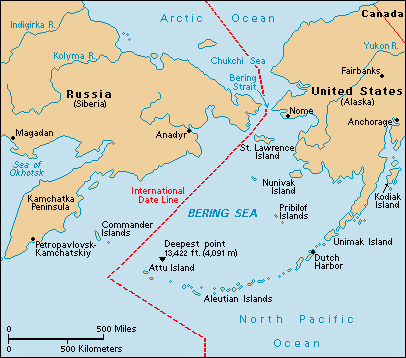Pribilof, << PRIHB uh `lawf,` >> Islands are four hilly islands in the Bering Sea. They are the home of the world’s largest fur seal herd. Each spring, hundreds of thousands of fur seals go to the Pribilofs to breed. The Pribilofs include the large islands of St. Paul and St. George, and the smaller islands of Otter and Walrus. They cover 77 square miles (199 square kilometers) and have about 500 people. The United States obtained the islands when it bought Alaska in 1867.

For many years, there were no restrictions on hunting the seals. As a result, they almost became extinct. In 1911, the United States, Russia, the United Kingdom, and Japan signed a treaty in which they agreed to protect the seals, and the United States received charge of the herd. In 1957, the United States, Canada, the Soviet Union, and Japan agreed to restrict seal hunting to the Pribilofs and two Soviet islands. The treaty expired in 1984. Since then, animal protection laws have prevented commercial hunting of fur seals around the islands.
In 1786, the Russian explorer Gerasim Loginovich Pribylov (also spelled Pribilof) discovered the islands. They were then uninhabited. Russian traders brought Aleuts from the nearby Aleutian Islands to the Pribilofs to help hunt seals. The Aleuts continued to settle there. Today, St. Paul has about 400 people. It is Alaska’s largest Aleut community.
See also Bering Sea controversy; Seal.
